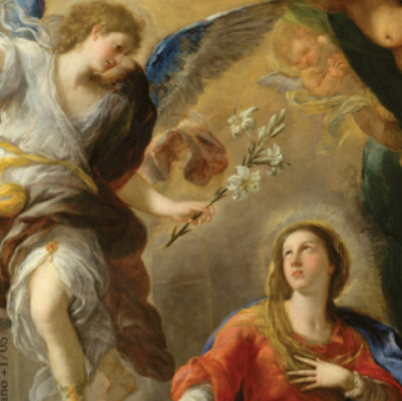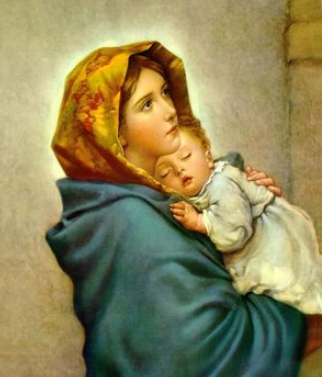
Hail Full of Grace
Have you ever wondered the significance of Angel Gabriel’s greeting to Mother Mary – ‘Hail, Full of Grace’ (Luke1:28).

The nativity of Jesus is best explained in the gospel of Luke with intricate personal details. It is believed that Mother Mary herself recounted all these incidents directly to the gospel writer. A physician by trade, Luke’s gospel is commendable for its attention to detail and is written in Greek. To completely comprehend the significance of angel Gabriel’s greeting we need to examine the exact Greek rendition used by Luke.
Luke uses the Greek expression “Chaire, Ke charito mene” for “Hail, Full of Grace” when greeting Mother Mary. “Ke charito mene” translates to someone who has “already been graced” by God. God had specially chosen Mary to be the divine mother of God, the new ark of the covenant and had endowed her with abundant graces so she is untainted by sin completely. Hence the church believes in the “Immaculate Conception” of Mary, she was conceived without sin and she led a life without sin. Christ Jesus, her savior had already sanctified and saved her!
So, has Luke ever again used the word “charitos” which means grace. He did! He wrote one more book in the Bible, the Acts of the Apostles. Here Luke uses the Greek words “pleres charitos” to describe Stephen as full of grace (Acts 6:8) which means “attaining grace at that moment”.
The gospel writer’s different choice of words (inspired by the Holy Spirit) for the angel’s greeting to Mary is intentional and clearly indicates the elevated graceful status of Mother Mary.
When God reveals His plans for her through the angel, she wholeheartedly embraces her role as Christ’s mother. The Son of God is conceived in her by the Holy Spirit and she gave birth to Him in the poorest of the stables. She is made to flee to Egypt along with baby Jesus and Joseph, to avoid Herod amidst innocent babies getting slaughtered. She nurtures and cares for Jesus and she prompts the beginning of Christ’ ministry through the wedding at Cana (“Whatever He says to you, do it”), she watches her son getting sentenced to death and scourged, she follows her son carrying the cross, painfully watches Him getting nailed onto the cross and dying on the cross, joyfully witnesses the resurrected Christ and guides the early church. How beautifully has Mary fulfilled her role in God’s divine plan to save mankind.
